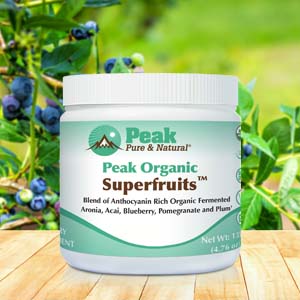Get Easy Health Digest™ in your inbox and don’t miss a thing when you subscribe today. Plus, get the free bonus report, Mother Nature’s Tips, Tricks and Remedies for Cholesterol, Blood Pressure & Blood Sugar as my way of saying welcome to the community!
3 dried fruits that fight cancer, constipation and old age

Dates, figs and prunes have several things in common…
They’re all fruits that we eat dried, not fresh.
They all originate in the Middle East. And they all have tremendous benefits for our health.
Terrific snacks on their own, these healthful nuggets can also be added to salads, baked goods, yogurt and any number of cooked dishes. And after you see how much they can impact your health, you won’t have an excuse not to incorporate them into your daily diet!
Here, then, is some background on these small, sweet, naturally dried fruits: where they come from, the powerful health benefits they offer, and how to enjoy them.
Dates: good for brain, bones and more
Dates have been eaten for over 4000 years. There are about 3,000 varieties of these dried fruits, but two are grown in the United States: medjool, fat and sweet; and deglet noor, smaller, drier and often used in baked goods.
Either way, the date is a rich source of nutrition. A 3.5-ounce serving has:
- 20 percent of the RDA of potassium. By comparison, a cup of bananas, known to be high in potassium, has only 11 percent.
- 18 percent RDA of copper
- 15 percent RDA of manganese
- 14 percent RDA of magnesium
- 12 percent RDA of Vitamin B6
Dates are also rich in three important antioxidants:
- Flavonoids have the potential for reducing the risk of Alzheimer’s, diabetes and certain cancers.
- Carotenoids are proven to promote heart health and reduce the risk of macular degeneration of the eyes.
- Phenolic acid is known for its top-notch anti-inflammatory properties, preventing a range of serious health conditions including heart disease and some cancers.
Three other great health benefits of dates:
- Bone health. The selenium, magnesium copper and manganese in dates are crucial to the process of forming healthy bones and preventing osteoporosis.
- Blood sugar control. Not only are dates full of fiber, but they have a low glycemic index, meaning the natural sugars they contain have little effect on blood sugar.
- Brain health. Laboratory studies have found that these dried fruits help lower inflammatory markers such as interleukin 6 (IL-) in the brain. High levels of IL-6 are associated with a higher risk of Alzheimer’s.
Figs: anti-aging, anti-cancer powerhouses
The fig tree is thought to be one of the first plants ever cultivated by humans, dating back as far as 5000 B.C. Fossils of figs have been found that predate the agriculture of wheat or barley.
Figs are an important part of the Mediterranean diet, well-known for reducing the risk of heart disease, diabetes and cancer.
Known for their sweet, juicy flavor and abundance of crunchy seeds, dried figs are a snack that packs a punch when it comes to nutrition. About three ounces has 26 percent of the RDA in manganese, 19 percent vitamin K and potassium, 17 percent magnesium, 16 percent calcium, 14 percent copper and 11 percent iron.
Throughout history, figs have been used to treat a wide range of health troubles. More than 40 illnesses of the digestive tract and the endocrine, respiratory and digestive systems have been treated with the fruit, its extracts or with parts of the fig tree.
Today, research shows that figs are good for:
- Fighting bacterial and fungal infections. In animal studies, fig extracts have acted as immune system boosters and were able to fight strains of oral bacteria.
- Anti-cancer properties. A study by the Department of Natural Medicinal Chemistry at China Pharmaceutical University showed figs to be toxic to various human cancer lines. In traditional medicine, the dried fruits have long had a reputation as a natural cancer treatment.
- Anti-wrinkle effects. The collagen and antioxidants in fig leaf and fruit extracts in face creams have significantly decreased the length and depth of facial wrinkles. One study also showed that these creams could help hyperpigmentation, freckles and acne.
Dried plums: not just for constipation
Dried plums, known to most of us as prunes, are good for a lot more than keeping you regular.
One serving of prunes has 129 percent of the RDA for vitamin K, which is essential for blood clotting. The same serving also contains 36 percent of the RDA for potassium and 27 percent of the daily requirement of vitamin A. But the benefits don’t end there…
- Healthy gut bacteria and cancer. Researchers at Texas A & M University found that these dried fruits help retain healthy gut bacteria in the colon, reducing the risk of colon cancer.
- Previous research indicated that phenolic compounds in prunes serve as antioxidants and help maintain levels of beneficial microorganisms in the colon that reduce the incidence of precancerous lesions.
- Healthy bones and muscles. Dried plums are a great source of the mineral boron, which builds strong muscles and bones, and prevents arthritis and osteoporosis.
- Lowers blood pressure. A 2010 study reported that groups who ate prunes and drank prune juice daily showed a significant reduction in blood pressure over those who did not eat prunes.
- Promotes healthy blood sugar. Prunes and plums are high in soluble fiber which helps keep blood sugar levels stable. Soluble fiber delays the absorption of sugar into the blood stream and increases the body’s sensitivity to insulin.
Editor’s note: Are you feeling unusually tired? You may think this is normal aging, but the problem could be your master hormone. When it’s not working, your risk of age-related diseases skyrockets. To reset what many call “the trigger for all disease” and live better, longer, click here to discover The Insulin Factor: How to Repair Your Body’s Master Controller and Conquer Chronic Disease!
Sources:
The Surprising Benefits of Dates, Figs and Prunes — GreenMedInfo.com
The effects of Ficus carica polysaccharide on immune response and expression of some immune-related genes in grass carp, Ctenopharyngodon idella — Fish and Shellfish Immunology
In vitro antimicrobial activity of four Ficus carica latex fractions against resistant human pathogens (antimicrobial activity of Ficus carica latex) — Pakistan Journal of Pharmaceutical Sciences
Use of prunes as a control of hypertension — Journal of Ayub Medical College Abbottabad













